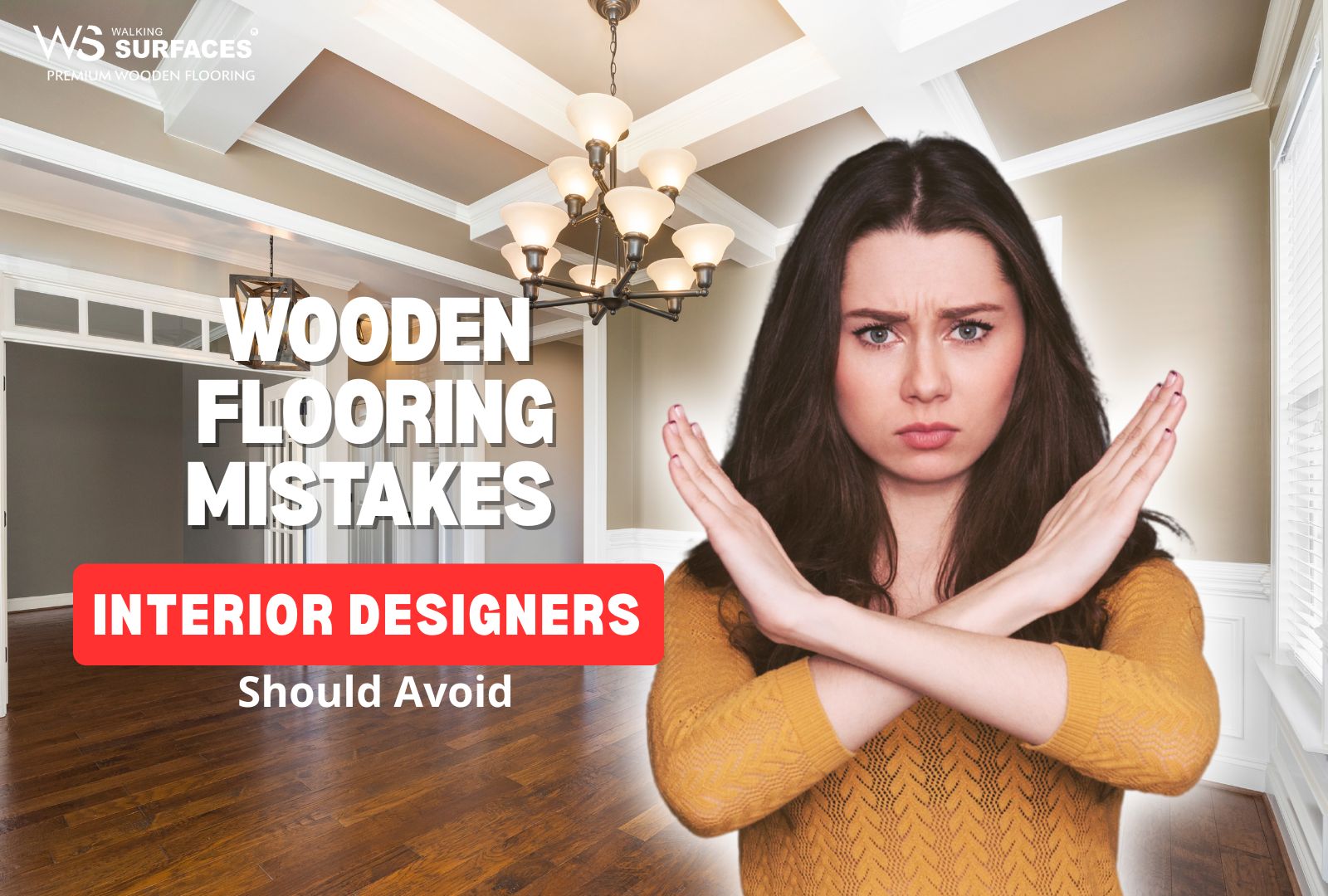
The warmth of wood underfoot is timeless. But while wooden flooring has long been a favorite canvas for interior designers, not all installations sing in harmony with their surroundings. Fast choices and lack of attention to detail can turn a brilliant vision into a forgotten chance. This blog unpacks some of the most commonly overlooked pitfalls—those pesky wooden flooring mistakes that can quietly unravel the most thoughtfully curated interiors.
Choosing Wood Without Factoring in Room Functionality
Every wood type has its own character; some are lightweight and soft, others are heavy and durable. Choosing walnut in a high-traffic area or maple in a humidity-prone bathroom may look stunning initially, but it’s a Quick decisions and ignored nuances can transform a perfect plan into a missed possibility. classic case of beauty fading fast. Interior designers and wooden flooring have a long-standing affair—but even the most seasoned creative can stumble by not weighing function with flair.
Design Tip: Always ask—who’s going to walk here, how often, and under what conditions?
Overlooking the Subfloor as If It Doesn’t Matter
We get it. The subfloor isn’t sexy. But it’s the silent hero of every floor that feels just right underfoot. A poor base can lead to squeaks, warps, and an uneven surface that even the finest oak can’t cover up.
Interior design flooring tips often focus on aesthetic choices, but a bit more attention to what’s beneath the surface can save both reputation and repair bills.
Disregarding Expansion Gaps – The Invisible Troublemakers
Wood is alive in its own way. It swells and shrinks depending on the surrounding heat and moisture levels. So when flooring is installed flush to the wall without room to shift, buckling is almost guaranteed. This is one of those common wood flooring errors that sneak up slowly—and then hit hard.
Pro Insight: Leave that tiny gap. Let the wood move. Think of it as giving your floor the space it needs to live.
Matching Everything to the Floor – Monotony Is Not Harmony
A wood floor doesn’t need to match every piece of furniture or every accent in the room. A mistake some designers make is going tone-on-tone, creating spaces that feel flat and uninviting. Instead, let the wood floor ground the space while other elements play off its warmth.
Interior designers and wooden flooring work best when there’s contrast, not camouflage.
Skipping the Sample Test – Lighting Can Be a Trickster
What looks like a rich golden hue in the showroom may turn muddy brown under your client’s pendant light. Or worse, under daylight, the grain might suddenly scream orange. Skipping sample tests in the actual space is a mistake even seasoned designers regret.
Interior design flooring tips: Always view samples during different times of day in the actual room they’ll live in.
Underestimating Maintenance Needs
Wooden floors are not high-maintenance divas, but they do need a little love. Designers sometimes promise clients a “zero-maintenance” dream, only for reality to scuff that illusion—literally. Less reflective finishes tend to hide signs of wear better than glossy types, while tougher wood varieties can withstand stilettos and pets more effectively. Among the mistakes to avoid with wooden floors, assuming your client will care for the flooring as per the manufacturer’s guidelines is right up there.
Going Trendy Over Timeless
That bleached, white-washed plank might be all over the magazines today, but will it still feel right five years down the line? Interior design is part art, part foresight. And when it comes to wooden flooring for interiors, classic often trumps trendy in the long run.
Think forward: Will the flooring still complement the space when styles shift?
Not Accounting for Acoustics
Wood can echo. And in open-plan layouts or high-ceilinged rooms, the noise can bounce around like a tennis ball in a squash court. Designers focused on visuals might forget how a space sounds—but acoustics are part of ambiance too.
Sound solution: Rugs, soft furnishings, or even acoustic underlays can make wooden floors whisper instead of shout.
Ignoring Color Shifts Over Time
As wood gets older, some species develop a darker or yellowish tone from prolonged exposure to sunlight. That honey-toned birch may take on a deeper hue with time. Not factoring in this natural evolution can lead to design dissonance—especially when floor tone plays a key role in the palette.
Design foresight tip: Ask your supplier how the wood will age and build that shift into your color story.
Skimping on Professional Installation
This one’s straightforward but often overlooked in the rush of project deadlines or budget crunches. DIY or low-cost installs might save now, but cost dearly later. Misalignment, faulty locking systems, and inconsistent surface finishes are some common consequences.
Flawless wooden flooring isn’t accidental—it’s the product of precise work backed by seasoned hands. Bringing in professionals isn’t just a wise choice—it’s a necessity.
Final Footnote
Acting as the silent base, wooden floors unify the elements of a room without seeking the limelight. Avoiding these wooden flooring mistakes is less about perfection and more about intention. Each decision—from grain pattern to underlayment—adds up to a story that your client lives with every day.
Interior designers who succeed with wood are those who approach it not just as a surface, but as a character in the space. A character that creaks, glows, warms, and sometimes steals the show—all while staying grounded.
